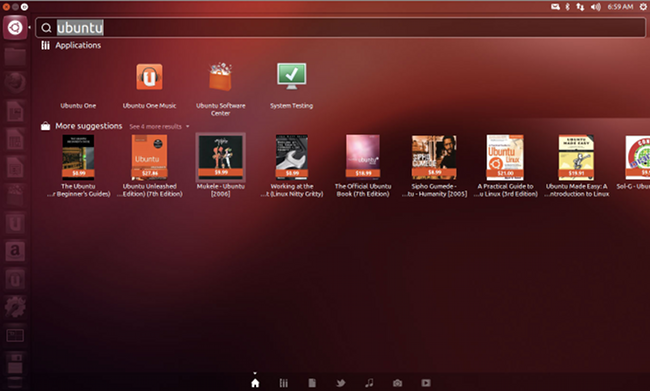Original URL: https://www.theregister.com/2012/12/30/linux_in_2012/
The year GNOMES, Ubuntu sufferers forked off to Mint Linux
It is only wafer-thin, and no cheque required
Posted in OSes, 30th December 2012 10:10 GMT
Linux in 2012 It's been a rough year for Linux on the desktop. More specifically, it's been a rough year for GNOME-based Linux on the desktop. But a glimmer of hope may have appeared thanks to a Mint-flavoured distribution of the open-source operating system.
KDE, XFCE and other desktop interfaces soldiered on in 2012 in their stolid ways, while GNOME 3, Gnome Shell and Ubuntu's GNOME-derived Unity desktop largely succeeded in turning the Linux world upside down, though perhaps not in the way they intended.
This year marks the first time many GNOME users were forced to face up to the unpleasant realisation that the community does not directly control the direction of development. The GNOME team is in charge as is Canonical, the maker of Ubuntu.
To be a GNOME or Unity user today is to be a pawn in a larger fight for marketshare, mindshare and the future of personal computing. This year's GNOME is no place for someone who just wants to get some work done.
The GNOME Shell interface has been nearly universally panned since it arrived and that didn't change in 2012. The difference is that this year, as GNOME Shell matured to version 3.4 and beyond, the criticisms were sharper, the shortcomings less forgivable. Even those willing to cut GNOME 3's Shell interface some slack for the first few iterations seemed to run out of patience. Linux kernel creator Linus Torvalds dismissed it as an "unholy mess" and decamped to XFCE and then KDE.
Whisper GNOME Shell anywhere on the web and a host of angry former GNOME users will show up decrying the lack of features: why, for the love of all things usable, is there still no button to minimise windows? It turns out those features, those things we all used to get things done - like minimising windows, using Alt-Tab to switch programs or, God forbid, changing the theme - are, in the view of GNOME developers, only things power users really want.
GNOME, as the developers would have you believe, is not designed for nerds that want to customise things. The GNOME project knows what you need and don't need. It shouldn't come as a huge surprise, GNOME developers have been saying this for years, but this year it seems to be finally sinking in.
"Software isn't designed by committee where you have to rationalise every decision before you take it," wrote one GNOME developer back in 2009 in a bug report questioning why GNOME 3's power manager is less functional than its predecessor. "Software is a vision," he continues. "I'm writing [the power manager] to that grand plan. If you don't like it that's fine."
In other words, it's our way or the highway.

As well as giving NVIDIA the finger, Torvalds gave GNOME similar short shrift and decamped to XFCE and then KDE
Apparently the developers at GNOME believed that in 2012, with fewer configuration options to confuse them, the masses would finally embrace Linux on the desktop and we could all go dancing into the night. This kind of hubris would be funny if it hadn't all but destroyed a once well-liked piece of software. (Meanwhile, Linux-based Android surges ahead in smartphones and other gadgets.)
Ubuntu's Unity is perhaps slightly less reviled than GNOME 3, but the poorly thought-out decision to merge irrelevant and often not-safe-for-work Amazon shopping suggestions into desktop search results angered many users and earned Canonical a public rebuke from the ordinarily Linux-friendly Electronic Frontier Foundation (EFF).
As if the move to the new Unity desktop wasn't contentious enough, Canonical's billionaire boss Mark Shuttleworth, along with his crew, thought the new Amazon Search Lens for Unity's desktop and local network search was a superb idea. The new Lens, which is enabled by default in Ubuntu 12.10, suggests products from Amazon and skims a cut of any sales if the user happens to purchase items.
Ubuntu apologists argue that Canonical's Amazon tool is no different to Mozilla's arrangement with its Firefox browser and Google: non-profit organisation Mozilla is paid to make Google the default search engine for information looked up using the web browser's search bar.
No, honestly boss, I was looking up 'analyse', not that
But the Amazon Lens squeezes itself into attempts to look for files on the desktop in front of the user, or on the local network, rather than web searches. Having Amazon shopping results come back when you're looking for a document or program on your desktop proved not only surprising, but next to useless - you're searching, say, for that holiday journal you kept in Russia two years ago, not Moleskine journals, diaries and bags on special offer.
The search results can even be, depending on your sensibilities, offensive.
Thanks to Unity's find-as-you-type feature, seemingly benign searches for words such as "analyze" and "assets" can bring up smutty Amazon video results for slow typists.
It got worse. As the EFF pointed out, your local search queries are sent to Amazon via Canonical's servers over a secure connection, but what Amazon sends back is not. That means, because images for suggested products are loaded directly from Amazon's servers rather than the in-between systems run by Canonical, Amazon has the ability to correlate search queries with your IP address.
Free-software firebrand Richard Stallman jumped into the fray by calling the Amazon Lens "spyware" and "surveillance code". Stallman went on to suggest that the free software community "tell people that Ubuntu is shunned for spying". Ubuntu's Jono Bacon called Stallman's tongue-lashing "childish" although the Ubuntu man later apologised and was unable to refute anything Stallman actually wrote. If the 300-plus comments on Bacon's blog post prove anything it is that - for once - the vast, vast majority of Linux users appear to agree with Stallman.
So why go out on a limb to turn on a feature that's largely useless, potentially offensive, may violate user privacy and is insecure to boot? Critics said Canonical is desperate for revenue. Shuttleworth said he just wants to make Unity more useful. Either way, despite the backlash and public criticisms over privacy, Canonical did not back down. Ubuntu 12.10 shipped with the Amazon Lens enabled by default but offered a kill switch.

Ubuntu's Amazon lens: a marriage of your desktop and the web bazaar's Jeff Bezos
In other words, it's our way or the highway. Again.
Of course while GNOME and Ubuntu may be turning a deaf ear to the community and forging off on their own separate paths, one Linux distro seems to be gaining converts: Mint Linux.
Not only does the Mint team listen to its users, it's solving real problems and offers two alternatives to the GNOME Shell: the temporary fix that is the MATE desktop and the longer-term alternative Cinnamon.
MATE, originally forked from GNOME 2 by an Arch Linux developer, is for anyone who wants to stick with the familiar GNOME 2 desktop. Cinnamon, on the other hand, takes GNOME 3's guts, rips out the GNOME Shell and replaces it with a user interface for those who prefer to "get things done", as Team Mint puts it. Cinnamon isn't perfect. In fact it can be quite buggy at times, but at least it's heading in a direction roughly opposite to GNOME and Unity.
Both of the Mint-sponsored desktops have proved popular enough that they're now part of Fedora's default repositories as well. Ubuntu, once the darling of desktop Linux and the overwhelmingly popular choice for newcomers, may soon lose that role to Mint.
Maybe 2012 will be the year we look back upon as the beginning of a changing of the guard among the Linux distros. ®